Description
The instruction for medical use
of MERTENIL® medicine
the Trade name
of Mertenil®
the International unlicensed
name Rosuvastatin Dosage Form
of the Tablet, film coated, 5 mg, 10 mg, 20 mg, 40 mg
Structure
One tablet contains
active agent: rosuvastatin of calcium of 5.2 mg (5.0 mg are equivalent to rosuvastatin), 10.4 mg (10.0 mg are equivalent to rosuvastatin), 20.8 mg (20.0 mg are equivalent to rosuvastatin), 41.6 mg (40.0 mg are equivalent to rosuvastatin),
excipients: lactoses monohydrate, cellulose microcrystalline 12, magnesium hydroxide, krospovidon type A, magnesium stearate,
structure of a film cover: opadray the II white: polyvinyl alcohol, titan dioxide (E171), macrogoal 3350, talc.
The description
of the Tablet, film coated white or almost white color, round, biconvex, with an engraving on one party of C33 (for a dosage of 5 mg), C34 (for a dosage of 10 mg), C35 (for a dosage of 20 mg), other party without engraving.
Tablets, film coated white or almost white color, oblong, biconvex, with an engraving on one party of C36 (for a dosage of 40 mg), other party without engraving.
Pharmacotherapeutic group
Hypolipidemic drugs. Gipokholesterinemichesky and gipotriglitseridemichesky drugs. Reductase HMG CoA inhibitors. Rosuvastatin
the ATX C10AA07 Code
the Pharmacological
Pharmacokinetics Absorption Maximum Concentration properties of rosuvastatin in blood plasma is reached in 5 hours after intake. The absolute bioavailability is about 20%.
Distribution
Rosuvastatin is absorbed mainly by a liver which is the main place of synthesis of cholesterol and clearance of metabolism of cholesterol – lipoproteins of the low density (LDL). The volume of distribution of rosuvastatin is about 134 l. 90% of rosuvastatin contact proteins of blood plasma, generally albumine.
Metabolism
Rosuvastatin is exposed to limited metabolism (about 10%), is not substrate for metabolism by enzymes of a system of P450 cytochrome. CYP2C9 is the main isoenzyme participating in metabolism while isoenzymes of CYP2C19, CYP3A4 and CYP2D6 are involved in metabolism to a lesser extent. The main metabolite – N-desmetil which for 50% is less active, than rosuvastatin. Lactonic metabolites pharmacological are inactive. More than 90% of pharmacological activity on inhibition of the circulating HMG-CoA reductase are provided with rosuvastatin, 10% – its metabolites.
Removal
About 90% of the accepted dose of rosuvastatin is removed in not changed view from an organism through intestines (including the absorbed and not absorbed rosuvastatin), and the rest is removed in not changed look by kidneys. Elimination half-life (T1/2) makes 19 hours and does not change at increase in a dose of drug. The average geometrical plasma clearance is about 50 l/hour (coefficient of variation of 21.7%). As well as in a case with other GMG-KoA inhibitors of reductase, the membrane carrier of cholesterol through membranes – a transport protein From organic anions (OATP-C) is involved in process of hepatic capture of rosuvastatin. This carrier plays a large role in rosuvastatin removal by a liver.
The linearity
Systemic action of rosuvastatin increases in proportion to a drug dose. Pharmacokinetic parameters do not change at daily reception.
The pharmacodynamics
Rosuvastatin – active agent of the drug Mertenil®, is a selection and competitive inhibitor of HMG-CoA reductase, the enzyme turning 3-hydroxy-3-metilglyutarilkoenzim A in mevalonat which is a predecessor of cholesterol. The main target of action of Mertenila®, the liver where synthesis of cholesterol (XC) and catabolism of lipoproteins of the low density (LDL) is carried out is.
Мертенил® increases number of hepatic receptors of LDL by surfaces of cells, increasing capture and catabolism of LDL.
It also slows down synthesis of cholesterol of lipoproteins of very low density (LPONP) in liver cells, thereby reducing the general content of LDL and LPONP.
Мертенил® reduces the increased cholesterol content – LDL, the general cholesterol and triglycerides (TG), increases cholesterol content – lipoproteins of the high density (HS-LPVP) and also reduces apolipoprotein B content (ApoV), HS-neLPVP (content of the general cholesterol minus the content of LPVP, HS-LPONP, TG-LPONP cholesterol and increases the level of A-I apolipoprotein (ApoA-I). Мертенил®, reduces a ratio of HS-LPNP/HS-LPVP, the general HS/HS-LPVP, HS-neLPVP/HS-LPVP and ApoV/ApoA-I.
The therapeutic effect can be reached within one week after an initiation of treatment, in 2 weeks 90% of the greatest possible effect are reached. Usually greatest possible therapeutic effect is reached in 4 weeks and maintained at further administration of drug.
Clinical performance
of Mertenil® it is effective at treatment of adult patients with a hypercholesterolemia with or without gipertriglitseridemiya symptoms, regardless of their race, a floor or age and also at treatment of special category of the patients sick with diabetes or a hereditary form of a family hypercholesterolemia.
Drug in a dose of 40 mg has to be appointed to patients with a severe form of a hypercholesterolemia and a high risk of development of cardiovascular diseases.
Indications
– primary hypercholesterolemia (the IIa type, including a family heterozygous hypercholesterolemia) or the mixed dislipidemiya (IIb type) as addition to a dietotherapy when the diet and other non-drug methods of treatment (for example, physical exercises, decrease in body weight) are insufficient
– a family homozygous hypercholesterolemia as addition to a dietotherapy and other methods of lipidsnizhayushchy therapy (for example, LPNP-aferez) or in cases when such therapy is insufficiently effective
– as addition to a diet for delay of progressing of atherosclerosis at adult patients as a part of therapy for decrease in levels of the general cholesterol and the XC LDL to target levels
– prevention of heavy cardiovascular complications at patients with high risk of primary atherosclerotic cardiovascular disease, as additional correction of other risk factors
the Route of administration and doses
Before an initiation of treatment the patient should keep to a standard diet using products with the low content of cholesterol which has to be continued also during the entire period of treatment. Doses of drug should be selected individually according to the purpose of the carried-out treatment and the therapeutic response of the patient to the carried-out therapy, considering the modern standard recommendations about target levels of lipids.
The recommended initial dose of drug makes 5 mg or 10 mg of 1 times a day as for the patients who were earlier not accepting statines and for the patients transferred to intake of this drug after therapy by other inhibitors of HMG-CoA reductase.
Choosing an initial dose of drug, it is necessary to consider cholesterol level at each specific patient and also possible risk of development of cardiovascular complications and potential risk of emergence of side effects. In case of need in 4 weeks it is possible to carry out correction of a dose.
Titration of drug to the maximum dose of 40 mg has to be carried out only at patients with a heavy hypercholesterolemia and high risk of cardiovascular diseases (in particular, with a family hypercholesterolemia) at which at reception of a dose in 20 mg the target level of cholesterol and which will be under medical observation was not reached. When assigning a dose of 40 mg the careful observation of patients is recommended. Purpose of a dose of 40 mg is not recommended to the patients who were earlier not taking the drug. Мертенил® it is possible to accept at any time, inside, regardless of meal, not to chew and not to crush, swallow entirely, washing down with water.
Use for elderly patients
For patients is aged more senior than 70 years prescribing of drug in an initial dose of 5 mg is recommended. Correction of a dose in connection with age is not required.
Whether use for patients with a renal failure with a renal failure of easy moderate severity dose adjustment is required From patients. The recommended initial dose of drug makes 5 mg for patients with a renal failure of moderate severity (KK less than 60 ml/min.).
Use for the patients predisposed to a myopathy
the Recommended initial daily dose at patients with the contributing factors of development of a myopathy makes 5 mg.
Side effects
Often (& gt, 1/100 to & lt, 1/10)
– dizziness, a headache
– myalgia
– an asthenia
– nausea, a constipation, an abdominal pain
– diabetes of the II type
Infrequently (& gt, 1/1,000 to & lt, 1/100)
– an itching, rash, urticaria
Seldom (& gt, 1/10,000 to & lt, 1/1000)
– reactions of hypersensitivity (including a Quincke’s disease)
– pancreatitis
– a miositis, a rhabdomyolysis
– increase in activity of hepatic transaminases
– a proteinuria
Very seldom (& lt, 1/10000)
– a polyneuropathy, memory loss
– jaundice, hepatitis
– an arthralgia
– a hamaturia
– sleep disorders, including insomnia and nightmares
– a depression
– sexual dysfunction
– isolated cases – interstitial diseases of lungs.
Not specified frequency
– diarrhea
– the immunomediated necrotizing myopathy
– cough, short wind
– Stephen-Johnson’s syndrome
– a gynecomastia
– peripheral swell
the Frequency of emergence of side effects has dose-dependent character.
Contraindications
For tablets 5, 10, 20 mg
– hypersensitivity to rosuvastatin or any of drug components
– liver diseases in an active phase, including permanent increase in activity of hepatic transaminases and also any increase in activity of transaminases in blood serum more than by 3 times in comparison with the upper bound of norm
– a liver failure with point higher than 9 on a scale of Chayld-Pyyu
– the profound renal failures (clearance of creatinine less than 30 ml/min.),
– a myopathy
– a concomitant use of cyclosporine
– predisposition to development of miotoksichesky complications
– a miotoksichnost against the background of intake of other inhibitors of GMK-KoA-reduktazy or fibrat in the anamnesis
– an inborn lactose intolerance, deficiency of lactase or glyukozo-galaktozny malabsorption
– pregnancy and the period of a lactation
– children’s and teenage age up to 18 years
For tablets of 40 mg
– hypersensitivity to rosuvastatin or any of drug components
– liver diseases in an active phase, including permanent increase in activity of hepatic transaminases and also any increase in activity of transaminases in blood serum more than by 3 times in comparison with the upper bound of norm
– a liver failure with point higher than 9 on a scale of Chayld-Pyyu
– the profound renal failures (clearance of creatinine less than 60 ml/min.),
– a myopathy
– a concomitant use of cyclosporine
– a hypothyroidism
– the personal or family anamnesis of muscular diseases
– predisposition to development of miotoksichesky complications
– a miotoksichnost against the background of intake of other inhibitors of GMG-KoA-reduktazy or fibrat in the anamnesis
– a concomitant use of fibrat
– excessive alcohol intake
– states which can lead to increase in concentration of rosuvastatin in blood plasma
– patients of Asian race (Japanese, Chinese, Filipinos, Vietnamese and Koreans)
– an inborn lactose intolerance, deficiency of lactase or glyukozo-galaktozny malabsorption
– pregnancy and the period of a lactation
– children’s and teenage age up to 18 years
Medicinal interactions
Cyclosporine: at a concomitant use of drugs of change of concentration of cyclosporine in blood plasma it is not revealed, but leads to increase in concentration of rosuvastatin in blood plasma by 11 times.
Antagonists of vitamin K: as well as in a case with other inhibitors of GMG-KoA-reduktazy, the beginning of therapy of Mertenilom®, or increase in a dose of drug at the patients receiving at the same time antagonists of vitamin K (for example, warfarin or other coumarinic anticoagulants) can lead to increase in the international normalized relation (INR). Cancellation or a dose decline of the drug Mertenil® can cause reduction of MNO. In such cases it is necessary to carry out monitoring of MNO.
Ezetimib: the concomitant use of Mertenila®, and an ezetimib did not lead to changes of AUC or Cmax any of active ingredients. Gemfibrozil and other means reducing the level of lipids: the concomitant use of Mertenila®, and a gemfibrozil led to 2-fold increase C max and AUC rosuvastatin.
On the basis of these separate researches of interaction of drugs, pharmacokinetic interaction with fenofibraty it is not expected, however development of pharmakodinamichesky interaction of drugs is possible. Gemfibrozil, fenofibrat, other fibrata and doses of Niacinum (niacin) in lipidsnizhayushchy doses (1 g or more in day) increase risk of development of a myopathy at co-administration with HMG-CoA reductase inhibitors, it is possible because they can cause a myopathy and at inclusion in monotherapies.
Inhibitors of proteases: at the same time it is not recommended to appoint Mertenil® and inhibitors of proteases at therapy of patients with HIV, lengthening of elimination half-life of rosuvastatin is possible.
Antacids: the concomitant use of Mertenila® and antacids in suspension, the containing aluminum and magnesium hydroxide, can lead to decrease in concentration of Mertenila®, in blood plasma approximately for 50%. This action is significant more weakly if antacids are applied in 2 hours after reception of Mertenila®.
Erythromycin: the concomitant use of Mertenila® and erythromycin led to 20% to decrease in AUC (0-t) and 30% of Cmax of rosuvastatin. This interrelation can be caused by strengthening of the motility of intestines caused by intake of erythromycin.
Oral contraceptives / gormonozamestitelny therapy (GZT): the concomitant use of Mertenila® and oral contraceptives led to increase in AUC ethinylestradiol and Norgestrelum for 26% and 34%, respectively. At selection of doses of oral contraceptives it is necessary to consider a possibility of increase in plasma concentration.
P450 cytochrome isoenzymes: Мертенил® is not either inhibitor, or the inductor of isoenzymes of P450 cytochrome. It is rather weak substrate for these enzymes. Clinically significant interactions between Mertenilom® and flukonazoly (CYP2C9 and CYP3A4 inhibitor) or ketokonazoly were not revealed (CYP2A6 and CYP3A4 inhibitor). Co-administration of an itrakonazol (CYP3A4 inhibitor) and Mertenila® led to 28% to increase in AUC rosuvastatin.
Other medicines: clinically significant interaction at a concomitant use of Mertenila® and digoxin is not expected.
Special instructions
Influence on kidneys
the Proteinuria, mainly canalicular origin, was noted at patients at reception of high doses of Mertenila®, in particular 40 mg, but in most cases was periodic or short-term. It is shown that such proteinuria does not mean emergence sharp or progressing of the existing disease of kidneys. Frequency of serious violations of function of kidneys increases at reception of 40 mg of rosuvastatin. It is recommended to control indicators of function of kidneys during therapy by the drug Mertenil®.
When assigning a dose less than 40 mg it is necessary to be careful.
Influence on skeletal muscles
At use of Mertenila® in all dosages, and in particular at administration of drug in the dose exceeding 20 mg myalgia, a myopathy and, in rare instances, a rhabdomyolysis came to light. Very seldom there was a rhabdomyolysis at a concomitant use of an ezetimib and inhibitors of GMG-KoA-reduktazy. In this case it is impossible to exclude pharmacological interaction of drugs therefore in common Mertenil® and ezetimib should be applied with care. Frequency of cases of a rhabdomyolysis at reception of 40 mg of rosuvastatin increases.
Assessment of activity of a kreatinfosfokinaza (KFK)
Determination of activity of KFK should not be carried out after the intensive physical activities causing increase in KFK as it can complicate interpretation of results. At increase in an indicator of KFK prior to therapy more than by 5 times the exceeding upper bound of norm, in 5-7 days it is necessary to take repeated measurement. If repeated measurement confirms an initial indicator of KFK (5 times higher in comparison with the upper bound of norm) therapy of Mertenilom® should not be begun.
Мертенил®, as well as other inhibitors of GMG-KoA-reduktazy, patients should appoint with extra care with the available risk factors of a myopathy/rhabdomyolysis. Treat such factors:
– the renal failure
– a hypothyroidism
– own or family anamnesis of muscular diseases (for a dose of 40 mg)
– existence in the anamnesis of a miotoksichnost against the background of intake of other inhibitors of GMG-KoA-reduktazy or fibrat (for a dose of 40 mg)
– an alcohol abuse (for a dose of 40 mg)
– age is more senior than 70 years
– the states which are followed by increase in concentration of drug in blood plasma (for a dose of 40 mg)
– a concomitant use of fibrat (for a dose of 40 mg)
At such patients it is necessary to estimate a ratio of risk and possible advantage of therapy and to carry out clinical observation throughout all course of therapy.
During treatment
It is recommended to inform patients on need to immediately report to the doctor about cases of unexpected appearance of muscular pains, muscle weakness or spasms, especially in combination with an indisposition or fever.
At such patients it is necessary to exercise control of activity of KFK surely. Treatment should be stopped if the KFK level more than by 5 times exceeded the upper bound of norm or if muscular symptoms are pronounced and cause daily discomfort (even if the activity of KFK is 5 times less than the upper bound of norm). If symptoms disappear, and the activity of KFK is restored to normal level, it is necessary to consider a question of repeated purpose of Mertenila® or prescribing of alternative inhibitor of GMG-KoA-reduktazy in smaller doses at careful observation of the patient. Regular control of activity of KFK at patients in the absence of clinical manifestations is inexpedient.
However increase in number of cases of a miositis and a myopathy was revealed at the patients accepting other inhibitors of GMG-KoA-reduktazy together with derivatives of fibroyevy acid, including gemfibrozit, cyclosporine, niacin in lipidsnizhayushchy doses, antifungal drugs, inhibitors of proteases and makrolidny antibiotics. Gemfibrozil increases risk of emergence of a myopathy at the combined appointment with some inhibitors of GMG-KoA-reduktazy. Therefore the concomitant use of rosuvastatin and a gemfibrozil is not recommended. The ratio of risk and possible advantage at combined use of rosuvastatin with fibrata or niacin in lipidsnizhayushchy doses (more than 1 g) has to be carefully estimated.
Patients should not appoint the drug Mertenil® with the acute, serious illness allowing to assume a myopathy or with possible development of the secondary renal failure connected with a rhabdomyolysis (for example: sepsis, arterial hypotension, surgical intervention, injury, heavy metabolic, endocrine, electrolytic disturbances, uncontrollable convulsive attacks).
The patients who are abusing alcohol and/or having in the anamnesis of a disease of a liver should appoint influence on a liver As well as other inhibitors of GMG-KoA-reduktazy, the drug Mertenil® with extra care.
It is recommended to carry out definition of indicators of function of a liver to and in 3 months after an initiation of treatment. If the activity of hepatic transaminases in blood serum by 3 times exceeds the upper bound of norm, it is necessary to stop reception of Mertenila® or to reduce the accepted dose. Frequency of the profound abnormal liver functions (connected, generally with increase in activity of hepatic transaminases), increases at reception of 40 mg of drug.
At patients with a secondary hypercholesterolemia owing to a hypothyroidism, a nephrotic syndrome therapy of a basic disease has to be carried out prior to treatment of Mertenilom®.
An interstitial disease of lungs
extremely exceptional cases of development of an interstitial disease of lungs at reception Are described, especially long, separate statines. Clinical manifestations can include short wind, dry cough and deterioration in the general state (general weakness, decrease in body weight and fever). At suspicion on development of an interstitial disease of lungs in the patient, intake of statines it has to be stopped.
Diabetes
At patients, glucose level at whom was 5.6-6.9 mmol/l on an empty stomach, intake of rosuvastatin was connected with increase in risk of diabetes.
During the pharmacokinetic researches the increase in system concentration of rosuvastatin among patients of Asian origin in comparison with the data obtained among patients – representatives of Caucasian race is revealed.
Features of influence of medicine on ability to run the vehicle and potentially dangerous mechanisms
of the Research, Mertenila® studying influence on ability to driving of the car and control of mechanisms were not carried out. At the same time, when driving or other mechanisms it is necessary to consider that during treatment there can be dizziness.
Overdose
Symptoms: expressiveness of symptoms of side effects.
Treatment: symptomatic. It is necessary to control function of a liver and a degree of activity of KFK. Specific treatment at overdose does not exist.
The form of release and packing
On 10 tablets place in blister strip packaging.
On the 3rd blister strip packagings together with the instruction for medical use in the state and Russian languages put in a cardboard pack.
To Store storage conditions in original packing in the place protected from light, at a temperature from 15 wasps up to 30 wasps,
to Store out of children’s reach!
2 years
not to use a period of storage after expiry date!
Prescription status
According to the prescription
Budapest JSC Gideon Richter Producer 1103, Dyomryoi St., 19-21, Hungary
the Owner of the registration certificate
of JSC Gideon Richter, Hungary
the Address of the organization accepting in the territory of the Republic of Kazakhstan claims from consumers on quality of products: Representative office of JSC Gideon Richter in RK E-mail: info@richter.kz Phone number: 8-(727) 258-26-22, 8-(727) 258-26-23
To develop
Additional information
| Ingredient |
|---|





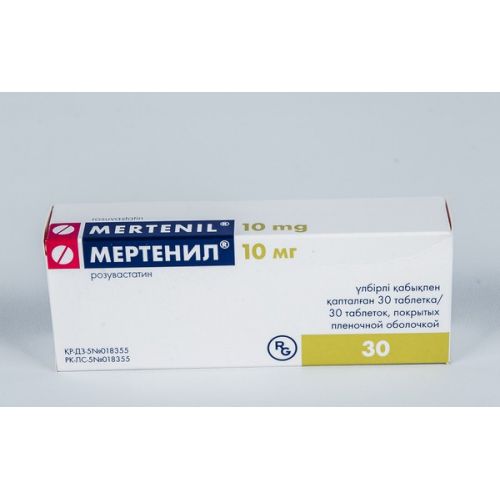
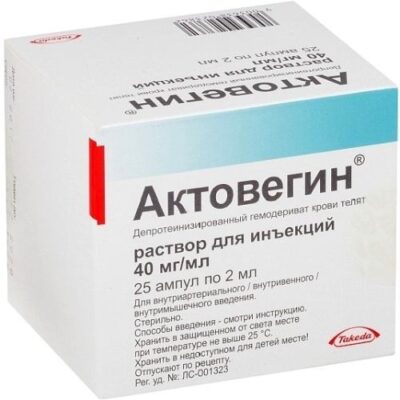
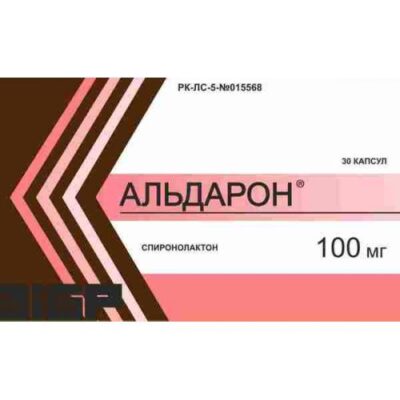
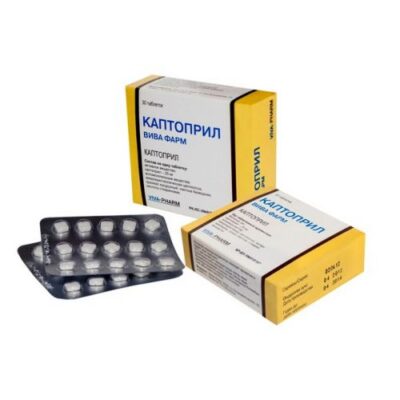
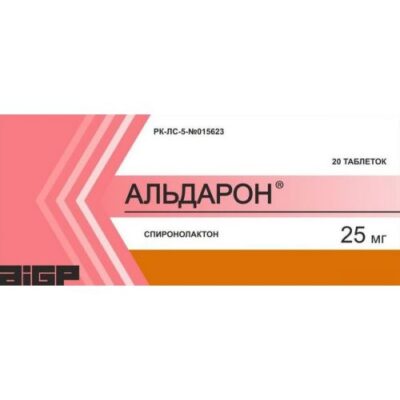
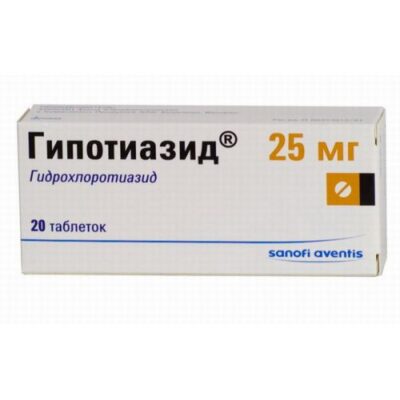

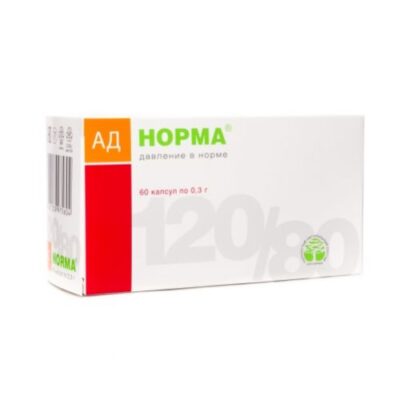
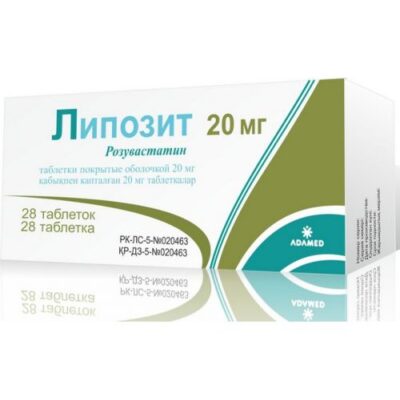
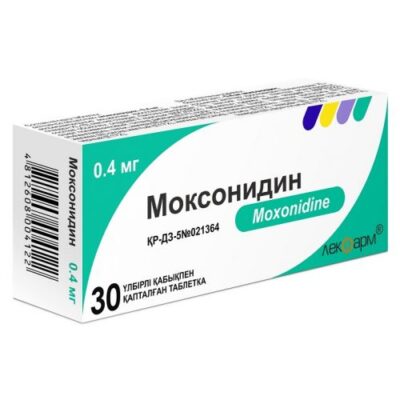
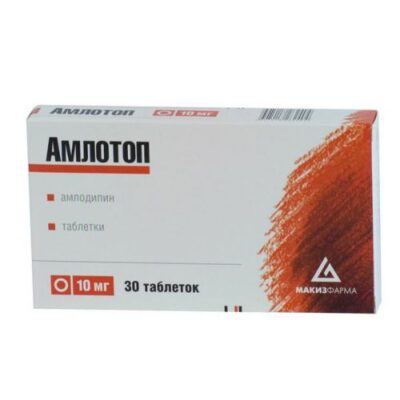






Reviews
There are no reviews yet.